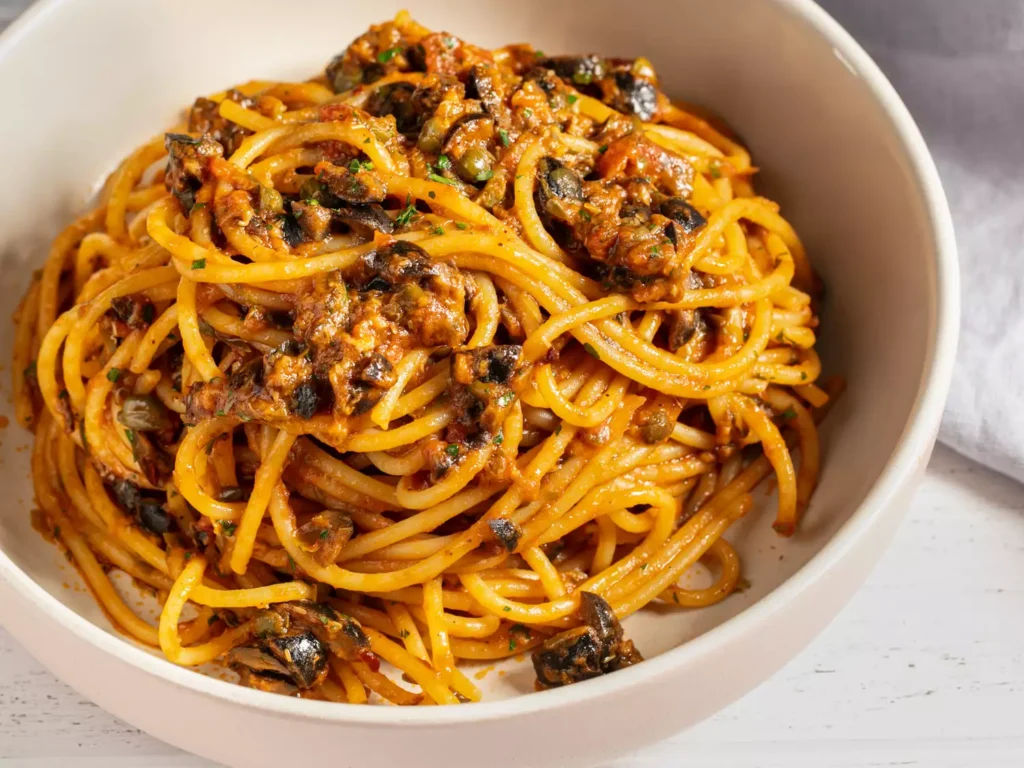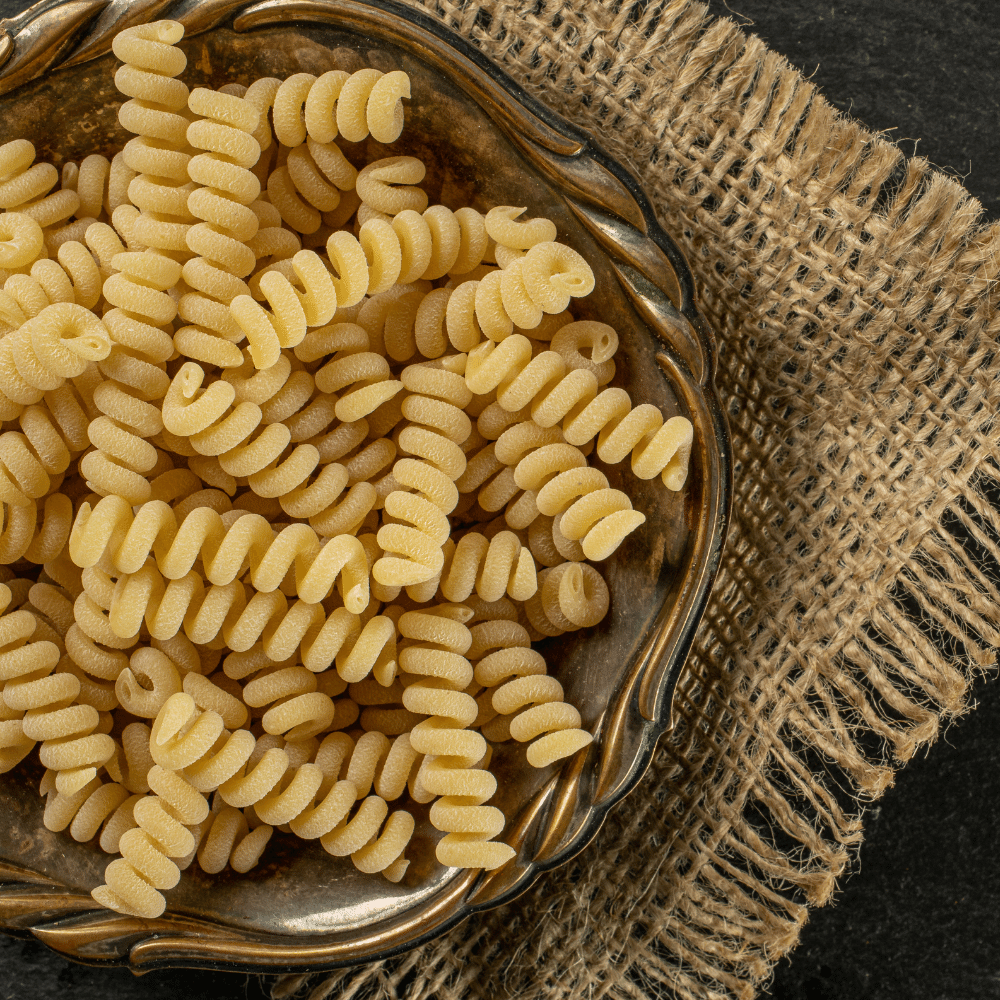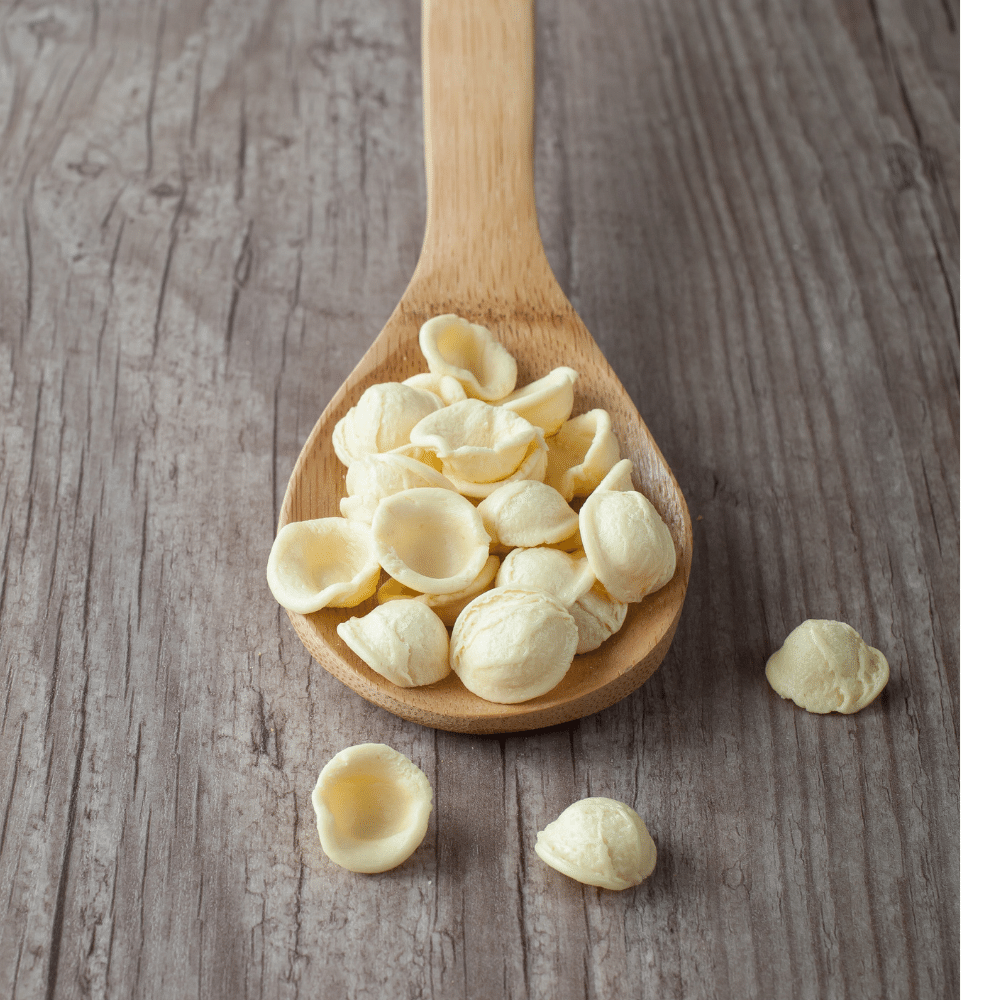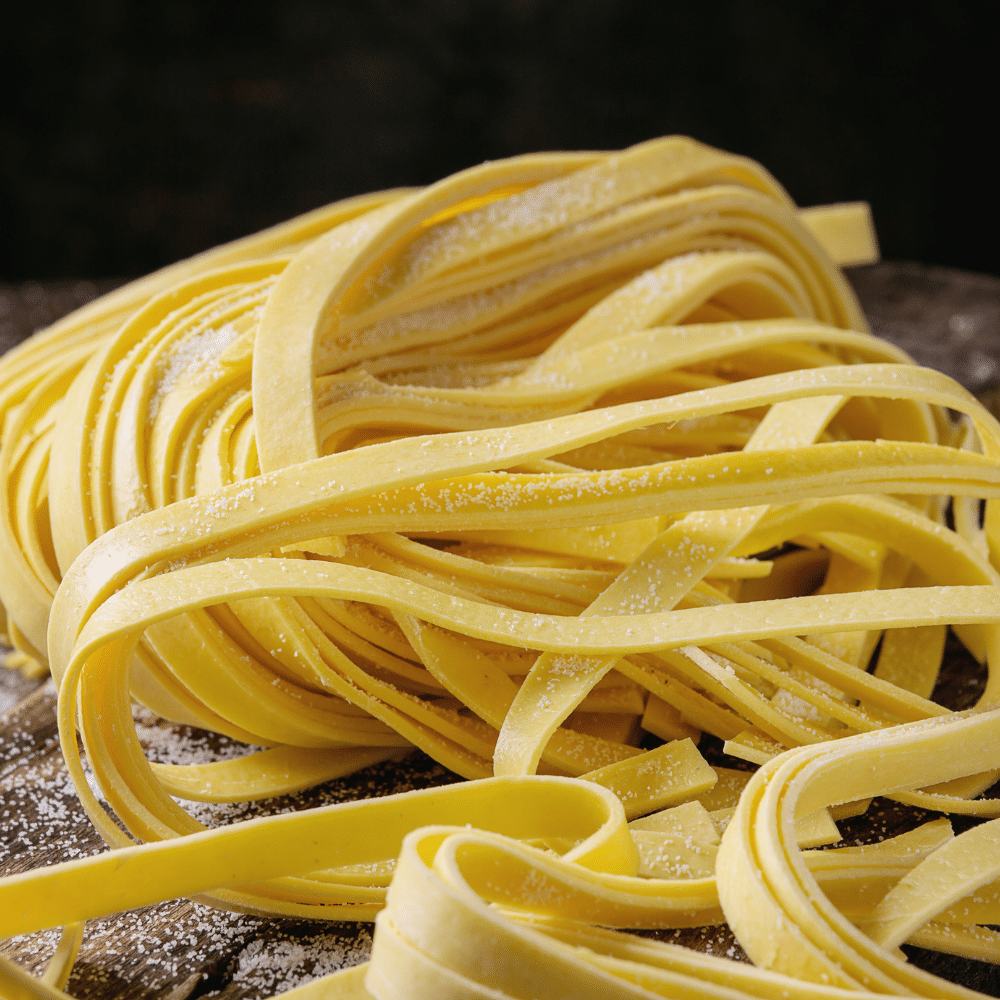Just like any recipe, the type of pasta can make or break it.
For an authentic Puttanesca, you’ll want to pick the right type of noodles for optimal consistency and flavor.
That’s why I’ve compiled this list of eight delicious kinds of pasta that are perfect for this classic dish.
From fusilli to spaghetti, I’ve got you covered!
These options will take your Puttanesca from simple to stellar in no time!
Read Also: Pasta Puttanesca Wine Pairing – Best Wines for Pasta Puttanesca
What is Puttanesca?

Puttanesca is an Italian pasta sauce made with tomatoes, olives, capers, garlic and anchovies.
It is a popular dish in Italy and around the world due to its bold flavor profile and ease of preparation.
The traditional ingredients used in puttanesca are tomatoes (fresh or canned), olives (usually black but green can be used as well), capers, garlic, anchovies (optional) and herbs such as oregano or basil.
Other variations may include red pepper flakes for heat, white wine for acidity or onions for sweetness.
Puttanesca is usually served over spaghetti but can also be enjoyed with other types of pasta such as penne or linguine.
It pairs well with a variety of proteins including fish, chicken and beef.
The 8 Best Pasta for Puttanesca
The key to a successful Puttanesca is finding the right type of pasta.
Here are eight types of pastas that can be used in Puttanesca dishes, each offering a unique taste and texture:
1. Angel Hair Pasta

Angel hair pasta, also known as capellini, is a type of thin Italian pasta.
It’s made from durum wheat semolina and water and is usually sold in long strands.
The name comes from the fact that it looks like fine strands of hair when cooked.
Angel hair pasta cooks quickly, making it perfect for weeknight meals or light summer dishes.
It pairs well with light sauces such as olive oil and garlic, pesto, tomato-based sauces, or creamy Alfredo sauce.
When served with Puttanesca sauce, angel hair pasta adds an extra layer of flavor to the dish without overpowering it.
The thin strands are able to absorb all the flavors of the sauce while still maintaining their delicate texture.
2. Bucatini

Bucatini is a type of pasta that resembles thick spaghetti, but with a hollow center.
It’s also known as perciatelli or maccheroncini di Campofilone.
The name comes from the Italian word buco, which means hole.
Bucatini has a slightly chewy texture and can be used in many different dishes, from soups to salads to main courses.
It’s especially good for sauces like puttanesca because the sauce gets into the hollow center of the noodles and coats them evenly.
The long shape of bucatini also makes it perfect for twirling around your fork!
Bucatini pairs well with robust flavors like garlic, anchovies, olives and capers—all ingredients found in puttanesca sauce.
3. Fusilli

Fusilli is a type of pasta that is shaped like a corkscrew or spiral.
It’s made from durum wheat semolina and water, and can be served with any sauce.
The shape of the fusilli helps it to hold onto sauces better than other types of pasta, making it an excellent choice for dishes such as puttanesca.
The combination of the savory flavors in the puttanesca sauce with the texture of the fusilli makes for an incredibly delicious dish!
Fusilli also works well with creamier sauces such as Alfredo or carbonara.
For added flavor, try adding some freshly grated Parmesan cheese on top before serving!
4. Linguine

Linguine is a type of pasta that’s similar to spaghetti, but it’s flatter and wider.
It’s made from durum wheat flour and water, and is usually cut into long, thin strands.
Linguine has a slightly chewy texture and can be used in many different dishes.
It pairs particularly well with puttanesca sauce because the flat shape of the linguine helps to hold onto the chunky ingredients like olives, capers, tomatoes, anchovies, garlic and herbs.
The combination of flavors creates an incredibly flavorful dish that will have your guests coming back for more!
Linguine also works great with other sauces such as pesto or carbonara.
The wide shape allows for more sauce to coat each strand so you get maximum flavor in every bite!
5. Orecchiette

Orecchiette is a type of pasta that originated in the southern Italian region of Apulia.
The name comes from the Italian word for ‘ear’, as the shape resembles a small ear.
Orecchiette are usually served with vegetables, cheese, and/or meat sauces.
They have a unique shape that helps them hold onto sauce better than other types of pasta.
The ridges on the surface also help to trap bits of herbs and spices, making it an ideal partner for Puttanesca sauce which is made with anchovies, capers, olives and tomatoes.
When cooked al dente (firm to the bite), orecchiette has a chewy texture that stands up well to bold flavors like those found in Puttanesca sauce.
It’s also great for cold salads or soups because it holds its shape even when chilled or reheated.
6. Rigatoni

Rigatoni is a type of pasta that originated in Italy.
It’s a large, tube-shaped pasta with ridges along the sides and ends.
The ridges help sauces cling to the pasta, making it perfect for hearty dishes like puttanesca.
Rigatoni is usually made from durum wheat flour and water, but some varieties are made with whole wheat or other grains.
It has a slightly chewy texture and holds up well to cooking and baking.
Rigatoni can be used in many different types of dishes including soups, casseroles, salads, baked dishes, and more!
When cooked correctly it should have an al dente texture – firm but not crunchy – that will hold its shape when mixed with sauce or other ingredients.
7. Spaghetti

Spaghetti is a type of pasta that is long, thin and cylindrical in shape.
It’s made from durum wheat semolina flour and water.
Spaghetti is one of the most popular types of pasta around the world, and it’s often served with tomato-based sauces like puttanesca or marinara.
The name “spaghetti” comes from the Italian word for “string,” which refers to its long, thin shape.
Spaghetti can be cooked al dente (firm to the bite) or soft depending on how you prefer it.
When cooking spaghetti, make sure to add salt to your boiling water before adding the noodles so they will absorb some flavor as they cook.
Once cooked, spaghetti can be dressed with olive oil or butter and topped with herbs like parsley or basil for added flavor.
8. Tagliatelle

Tagliatelle is a type of pasta that originated in the Emilia-Romagna region of Italy.
It’s made from durum wheat flour and eggs, and it has a flat, ribbon-like shape with edges that are cut into thin strips.
The name comes from the Italian word “tagliare,” which means to cut.
Tagliatelle is similar to fettuccine but slightly narrower; it can be served with any kind of sauce, but it pairs especially well with heavier sauces like Puttanesca.
When cooking tagliatelle, you should use plenty of salted boiling water and stir the noodles occasionally so they don’t stick together.
Cook them for about 8 minutes or until al dente (tender but still firm).
Once cooked, drain the noodles in a colander and serve immediately with your favorite sauce.
If you’re serving Puttanesca with tagliatelle, make sure to add some freshly grated Parmesan cheese on top for extra flavor!
Conclusion
In conclusion, there are a variety of pasta types that work well with puttanesca sauce.
The best pastas for this sauce are angel hair pasta, bucatini, fusilli, linguine, orecchiette, rigatoni, spaghetti, and tagliatelle.
Each of these kinds of pasta has its own unique texture and flavor that pairs nicely with the bold and flavorful sauce.
Using a combination of these pasta types can create a delicious and unique dish that is sure to be a hit with family and friends.
So, the next time you’re looking for a tasty way to enjoy puttanesca, reach for one of these pastas and you’re sure to have an unforgettable meal.

8 Best Types of Pasta for Puttanesca
Ingredients
- Angel Hair Pasta
- Bucatini
- Fusilli
- Linguine
- Orecchiette
- Rigatoni
- Spaghetti
- Tagliatelle
Instructions
- Pick your favorite kind of pasta from this list to serve with Puttanesca.
- Prepare the rest of your tasty meal, and enjoy in no time!
Jenny has always been passionate about cooking, and she uses her platform to share her joy of food with others. Her recipes are easy to follow, and she loves giving tips and tricks to help others create their own unique culinary creations.

